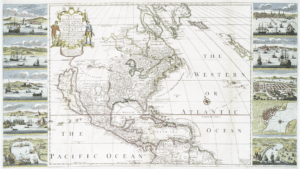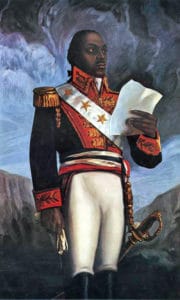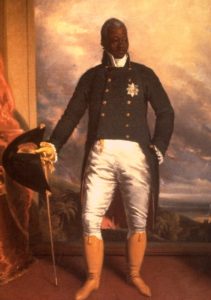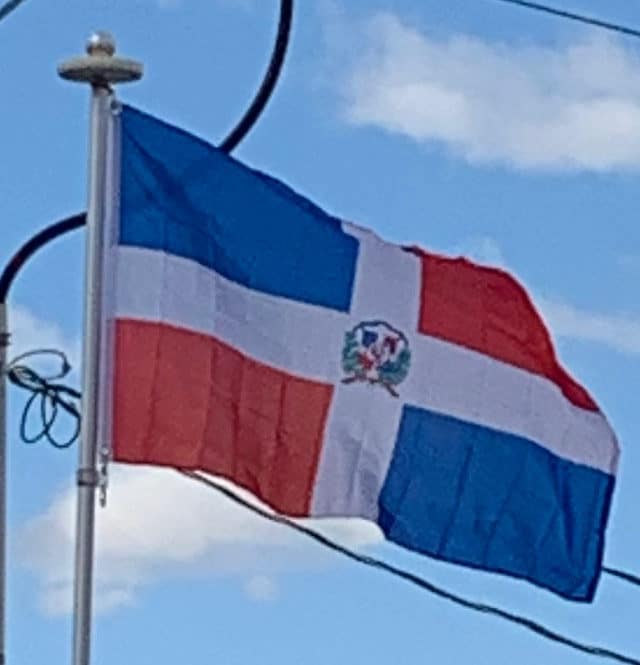
Although the Spanish military effort went well on Hispaniola, it did not so in Europe (War of the Pyrenees). As a consequence, Spain was forced to cede Santo Domingo to the French under the terms of the Treaty of Basel (July 22, 1795) in order to get the French to withdraw from Spain.
French Rule:
From 1795 to 1822 the city changed hands several times along with the colony it headed. It was ceded to France in 1795 after years of struggles. However, the French failed to consolidate this cession, mainly because of the continued presence of British troops in Saint-Domingue (they remained until 1798). As the news of Santo Domingo’s cession became known on the island, many Dominicans had sided with Britain against France, welcoming British ships into their ports, pledging allegiance to the British and enlisting in the military forces of France’s nemesis. The city was briefly captured by Haitian rebels in 1801, recovered by France in 1802, and was once again reclaimed by Spain in 1809. Toussaint Louverture, who at least in theory represented imperial France, marched into Santo Domingo from Saint-Domingue to enforce the terms of the treaty.

Toussaint’s army committed numerous atrocities; as a consequence, the Spanish population fled from Santo Domingo in exodus proportions. French control of the former Spanish colony passed from Toussaint Louverture to Gen. Charles Leclerc when he seized the city of Santo Domingo in early 1802. Following the defeat of the French under Gen. Donatien de Rochembeau at Le Cap in November 1803 by the Haitians, their new leader, Dessalines, attempted to drive the French out of Santo Domingo. He invaded the Spanish side of the island, defeated the French-led Spanish colonials at River Yaque del Sur, and besieged the capital on March 5, 1805. At the same time, the Haitian General Christophe marched north through Cibao, capturing Santiago where he massacred prominent individuals who had sought refuge in a church.

The arrival of small French squadrons off the Haitian coast at Goncaives and at Santo Domingo forced the Haitians to withdraw. As Christophe retreated across the island, he slaughtered and burned. In October 1808 the landowner Juan Sánchez Ramírez began a rebellion against the French colonial government in Santo Domingo and the insurgents were aided by Puerto Rico and British Jamaica. The British ejected the French and returned Santo Domingo to the Spaniards in 1809. The Spaniards not only tried to re-establish slavery in Santo Domingo, but many of them also mounted raiding expeditions into Haiti to capture blacks and enslave them as well.
Independence from Spain (1821):
After a dozen years of discontent and failed independence plots by various opposing groups, Santo Domingo’s former Lieutenant-Governor (top administrator), José Núñez de Cáceres, declared the colony’s independence from the Spanish crown as Spanish Haiti, on November 30, 1821. This period is also known as the Ephemeral independence.
Unification of Hispaniola (1822–44):
The newly independent republic ended two months later under the Haitian government led by Jean-Pierre Boyer.
